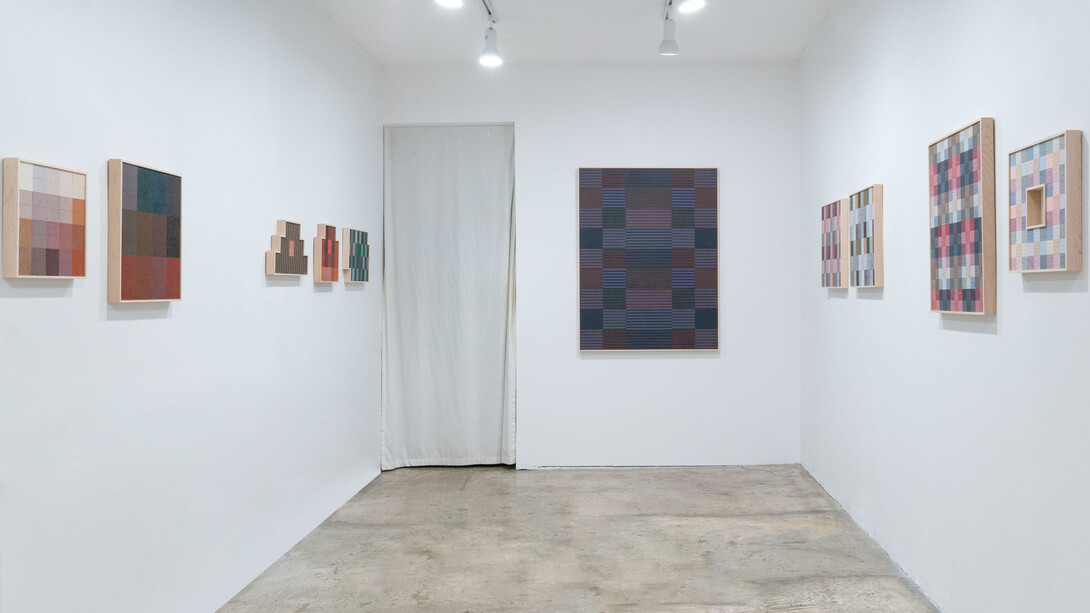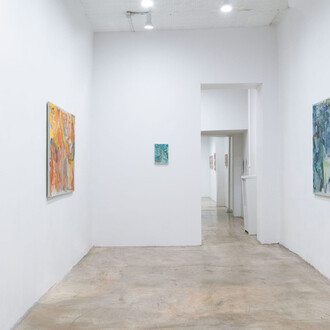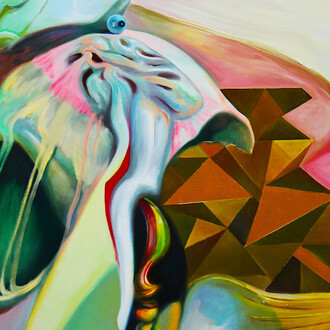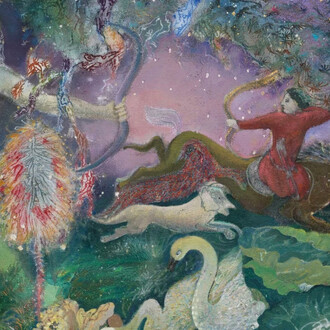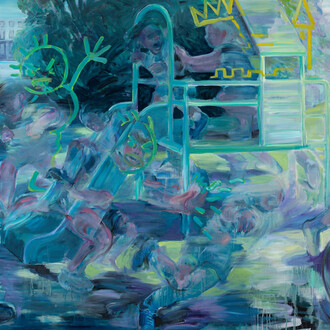Upon and within presents a series of new abstract artworks from artist Will Sears. Assembled from small painted wood pieces, the artist’s compositions function as fields of color that create an optical space. Each echoes the concerns of the color-field movement while also asserting its material surface as another kind of spatial condition.
Described as calming and meditative, Sears’ work is composed of restrained color palettes and repetitive construction–a repetition that parallels meditative practices of rhythmic breathing and the tactile counting of prayer beads. Each composition presents a duality that is revealed over time, exploring how color and material relate to space in different ways. The gradually unfolding color relationships create a sense of push and pull, which yields a perceived sense of depth as the viewer tries to make sense of the hierarchical relationship between colors.
The artist embraces the inevitable imperfection of the human hand while crafting each assemblage. The slightly misaligned corners and the burnished edges of the tiny wood components offer a reminder of surface; a different function of space than the perceived one. Sears starts each composition by painting sheets of plywood in latex paint, applied with a heavy-nap roller to create a pronounced texture. After the paint dries and has been lightly sanded, he cuts the sheets into smaller, thin rectangular pieces on a table saw. The slightly textured surface allows him to rub colored pencil over the raised grain part of the paint, producing a layered, dual-color ‘noise’ that activates the surface and can subtly push or pull the hue of the underlying color. Once cut and colored, the blocks are assembled like a mosaic but set flush against one another, without grout lines, so the seams read as intentional edges. Handmade frames are integral to each piece, reinforcing the object's presence as an art object while containing the visual field.
Sears’ work draws on both color-field and op-art strategies, and the artist frequently references Bauhaus ideas of design and structure—simple geometric elements used to explore color and spatial relationships. Important influences include Paul Klee, Anni Albers, and Josef Albers, as well as Agnes Martin, who has been particularly influential in regards to Sears’ line and grid-based compositions that offer a seemingly endless field for play.
